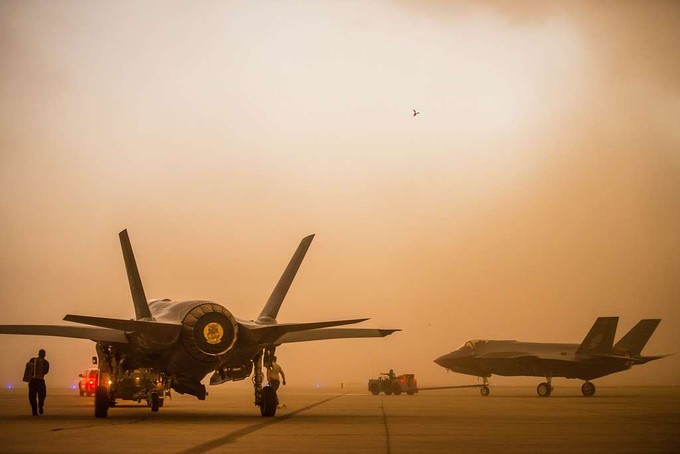Defund the JSF Program, Refund Our Communities!
By
Guest Blogger
Posted:
by Aspen Coriz-Romero

Photo by Robert Sullivan, courtesy of Picryl.
On the afternoon of March 28, 2024, an F35-B Lightning II fighter jet crashed into a hillside in Albuquerque, New Mexico. The nearly brand-new aircraft, demolished and ablaze, was previously worth roughly $109 million. Like many New Mexicans, the costly damage made me wonder, what else could that money have gone to?
Contracted by Lockheed Martin Aeronautics Company, the F-35 Joint Strike Fighter (JSF) program is the most expensive military acquisition in U.S. history, currently at over $2 trillion in lifetime costs. First introduced by the Pentagon in October 2001, the program works to produce a family of aircrafts for the U.S. Air Force, Navy, and Marine Corps. Despite high financial investments from taxpayers for over 20 years, the F-35 has been plagued by problem after problem.
It’s not the first time the F-35B has had a dire mishap. In September, an F-35 briefly went missing after its pilot and wingman had to eject, and the hapless Marine Corps dialed 911 to report the missing jet. The destroyed aircraft was found after the military asked for the public’s help. Last year, the office of Director, Operational Test & Evaluation (DOT&E) released an unclassified annual report detailing the performance of the program; only around 30% of the F-35 fleet is fully mission-capable.
Furthermore, the F-35 has dire environmental impacts, using a significant amount of fuel – around 2.37 gallons of fuel for every mile traveled (1,340 gallons of fuel per hour). A single F-35 tank of gas produces the equivalent of 28 metric tons of carbon dioxide, leading to unnecessary long-term damage to the global climate and risking the livelihood of future generations.
Taxpayers in the state of New Mexico paid $49.07 million dollars for the F-35 in fiscal year 2023 - and similar amounts every year. How can we reinvest?
The possibilities are eye-opening. According to the National Priorities Project budget calculator, this money could fund 7,346 public housing units, lessening the growing housing crisis. Or it could fund 555 elementary school teacher positions or 3,863 Head Start slots, securing educational opportunities for youth. The money could be used to secure 401 registered nurses or low income health-care for 1,2073 adults and children, expanding care across the state. It could even fund 151,581 wind-power households or 167,117 solar-power households utilizing clean energy to help preserve our precious land and water.
New Mexico could use the help. Exchanging warfare money for additional funding towards early childhood education can help fill in the gaps in our education system which has historically struggled with low proficiency rates. Or alternatively, investing in clean energy can reduce our state’s continued reliance on harmful gas and oil production that endangers the health of our communities and environment. Transitioning to clean sources of energy is urgent as New Mexicans are actively experiencing the devastating impacts of climate change with increasingly extreme weather patterns and disastrous wildfires. Instead, conservative lawmakers make moves to cut social programs while adding to the budget for war and weapons.
And while this aircraft crashed in New Mexico, people in every state are contributing to pay for this boondoggle of a weapons program, and people in every state have similar needs. Find out what your state pays for the F-35, and what else could be done with that money.
Aspen Coriz-Romero is the New Mexico Fellow at the Institute for Policy Studies.